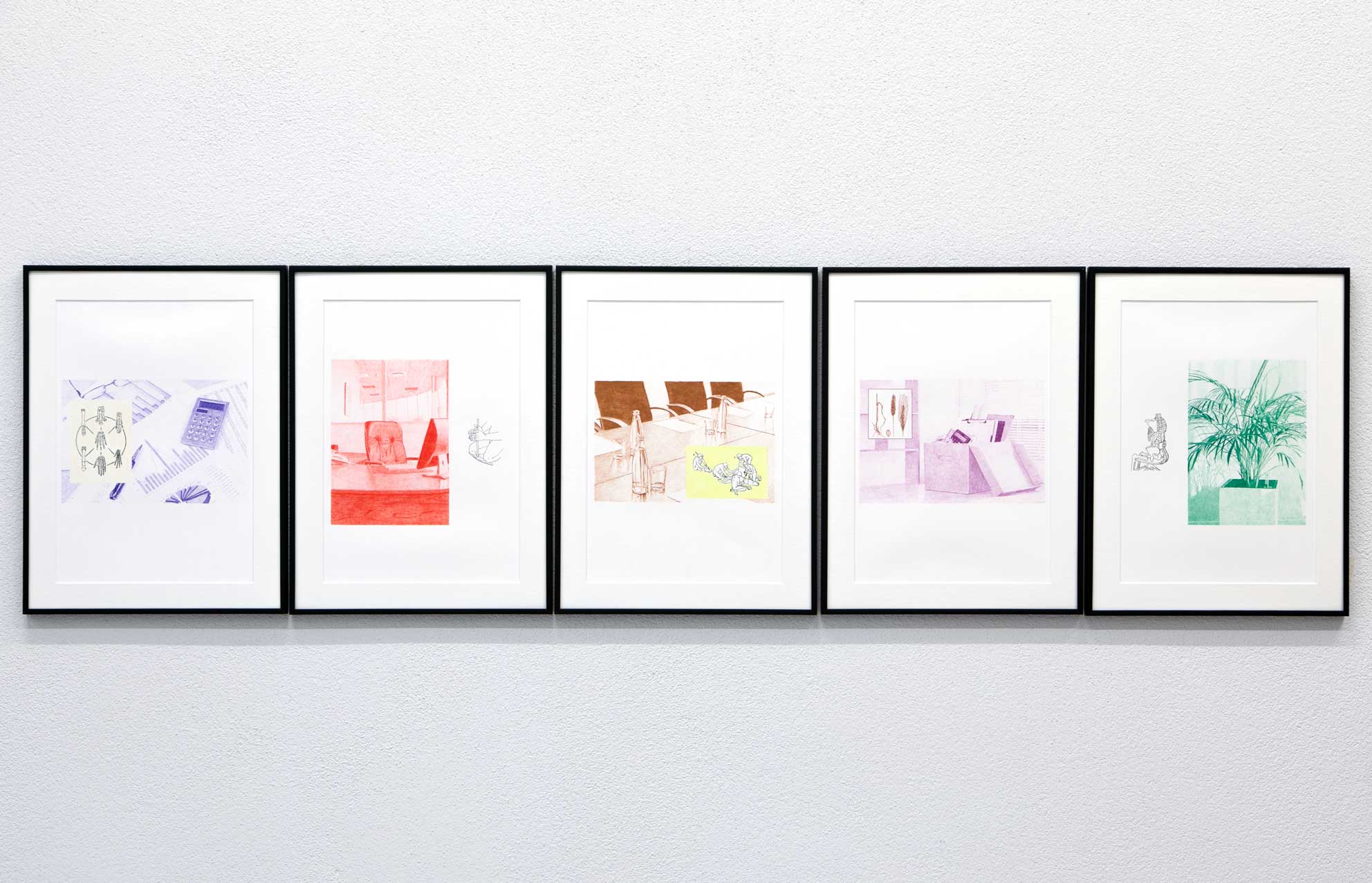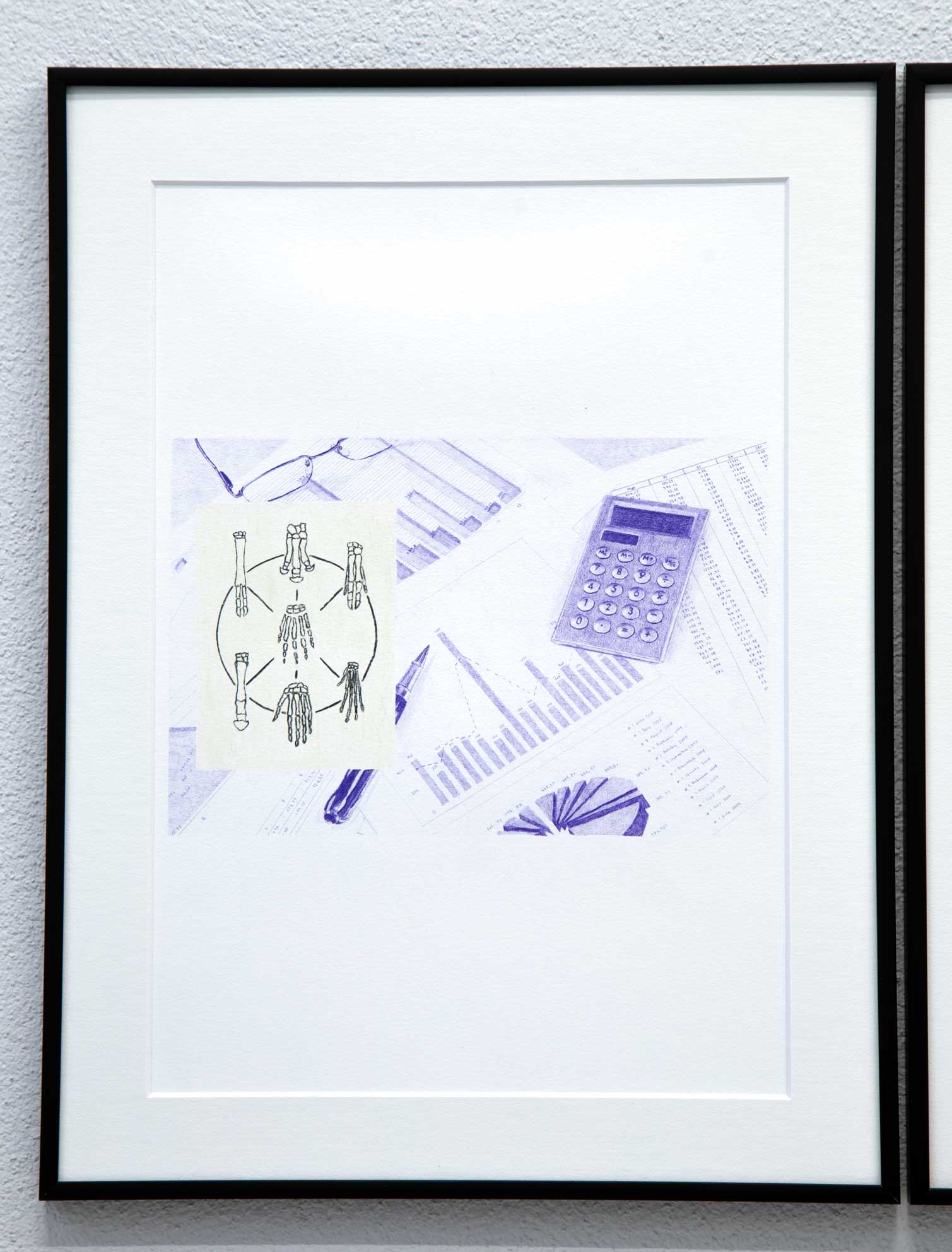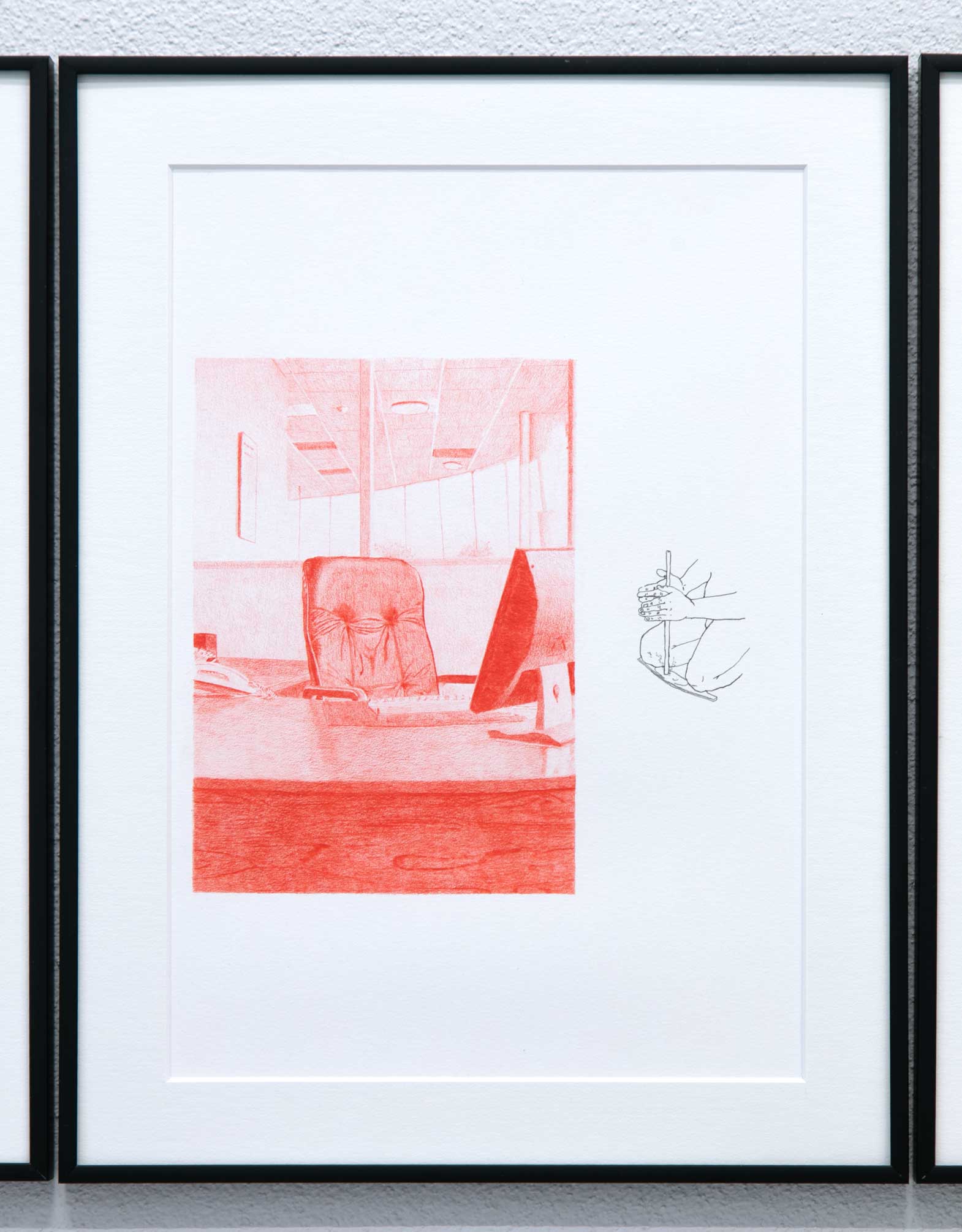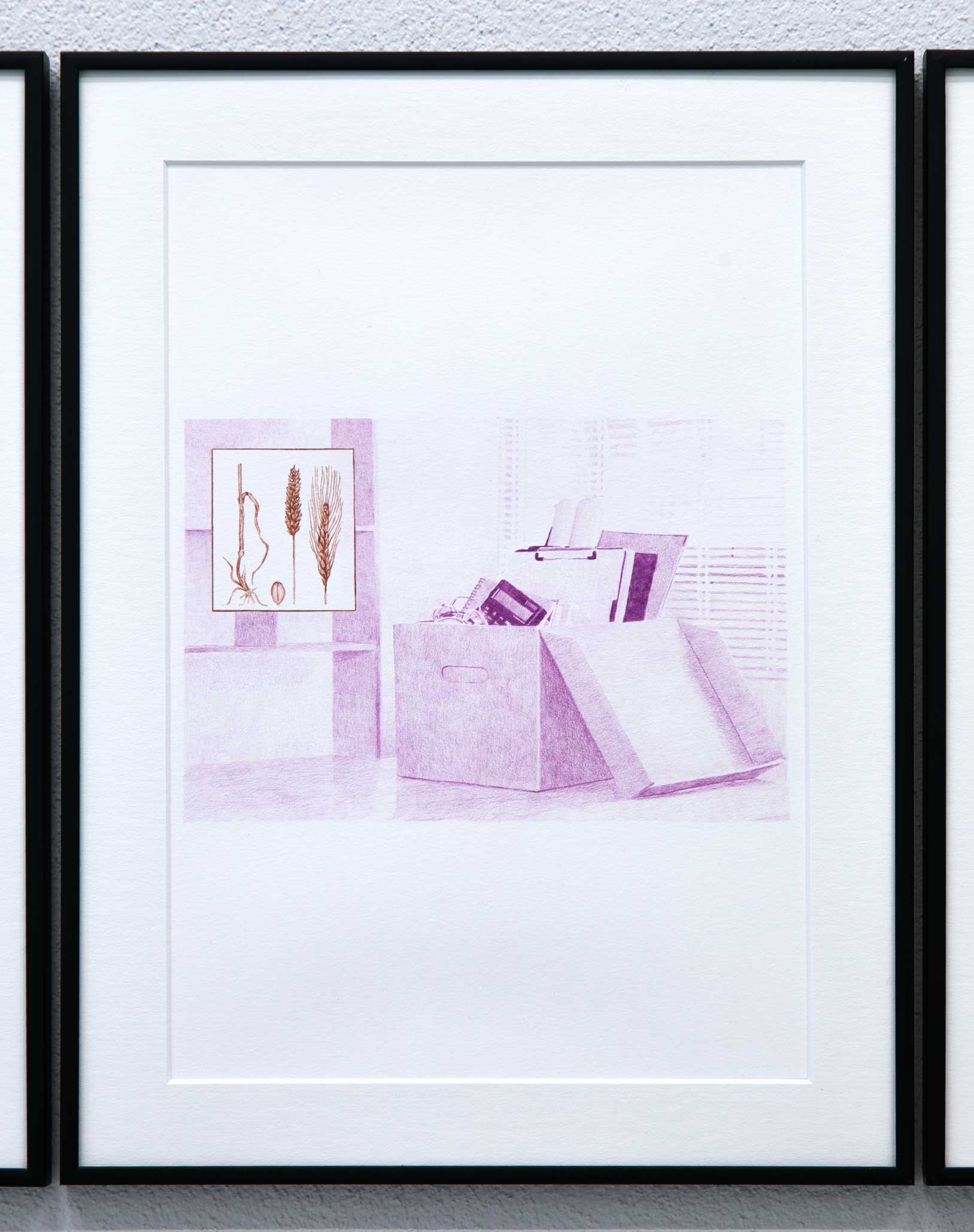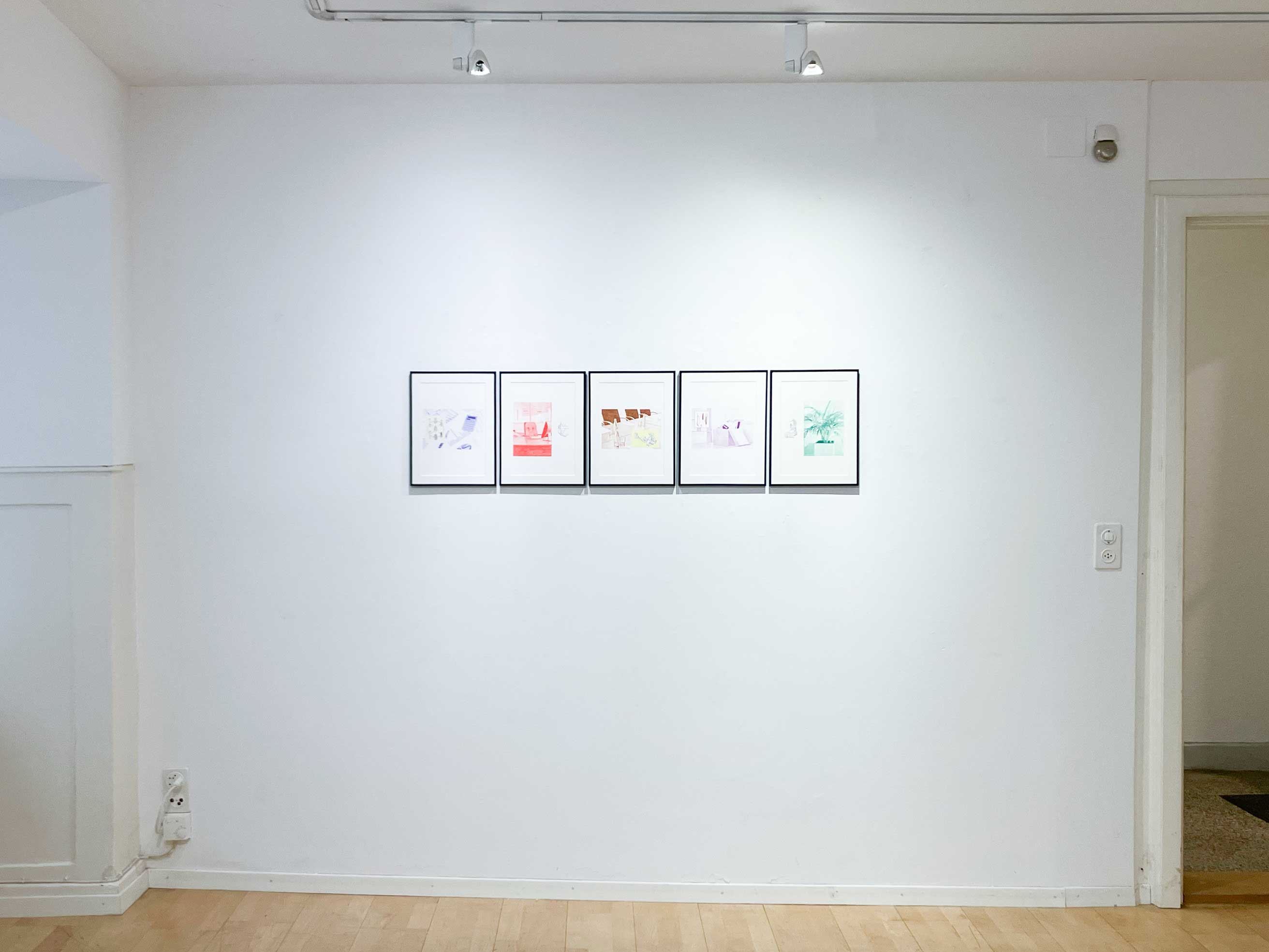origin myths is an ongoing series of drawings that juxtapose illustrations on human evolution with stock images from the corporate environment of Homo economicus — a model for human nature defined by self-interest and rationality commonly used in economic theory. Each drawing tests the ideas that justify our beliefs in contemporary capitalism.
1) Borrowing a quote from Adam Smith, “to promote (...)” parodies certain versions of biological determinism. The use of the hand is a central motif in evolutionary narratives. Curiously, Smith, too, used the metaphor of an invisible hand to explain the workings of the market.
2) “an economy of appearances (...)” refers to Friction, a book by Anna Tsing where she describes an ethnography of global capitalism. To explain the devastation and resistance to extractivist practices in Indonesia, she refers to the importance of storytelling.
3) In “business as usual (...)”, the hygienic space of the meeting room conceals the realities of corporate operations. Often, the vocabulary of predation used in business helps maintain a system based on violence and inequality.
4) “double coincidence of wants (...)” plays with a central theme in the origin of (so-called) civilization: agriculture. A sedentary culture associated with growing vegetables allowed for the accumulation of surplus and the development of cities; but the present accumulation of capital demands dynamism and flexibility (often euphemisms for precarity).
5) The last drawing is a memento mori (Latin for “remember you have to die”) for Homo economicus. The office version of a vanitas. Admittedly, a too early elegy for too late capitalism.
titles (from left to right): 1) to promote an end which was no part of his intention (writing/accounting); 2) the drama of business in an economy of appearances (friction); 3) business as usual (other things being equal); 4) double coincidence of wants (the neolithic diet) ; 5) the economic order (memento mori)
